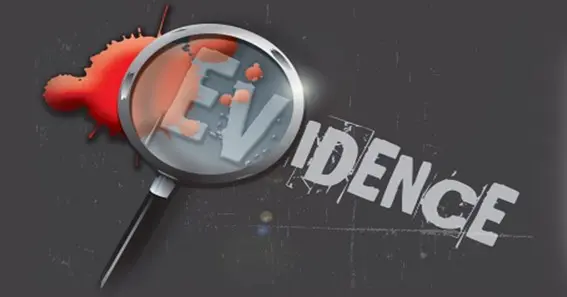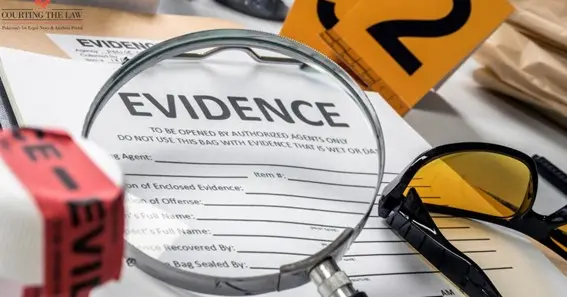What is circumstantial evidence? circumstantial evidence is indirect evidence that implies a fact without directly proving it. Circumstantial evidence is crucial in legal reasoning when unambiguous proof is unavailable. In this article we discuss about what is circumstantial evidence and more about it.
What is circumstantial evidence?
Circumstantial evidence is indirect evidence that implies a fact without directly proving it. When seen together, circumstantial evidence supports the same conclusion. Direct evidence uses papers, witness testimony, or real proof, whereas circumstantial evidence involves deduction and inference. Secondary evidence in real life might range from little information to complex chains of occurrences that support a conclusion. It operates by inference so that it can draw logical inferences about things not observed or recorded.
Circumstantial evidence doesn’t establish a fact in court, but it suggests it exists. This complex strategy reveals how difficult and crucial it is for legal reasoning to uncover case-decisive truths. A defendant’s fingerprints at the crime scene are indirect proof of their presence.
Key Insights into Circumstantial Evidence

As we already discuss what is circumstantial evidence, now explore how it helps us determine what happened in criminal and civil cases without direct evidence. To succeed in court, you must understand it, how it operates, and its restrictions. This comprehensive guide covers circumstantial proof’s key elements.
Definition and Nature
Circumstantial evidence demonstrates a reality without direct observation. Relevance and strength of reasoning findings determine its court admissibility and weight. Someone rushing from a crime scene with a gun is an example. This doesn’t prove they did it, but it suggests they were.
Examples of circumstantial evidence
Circumstantial evidence comprises motivation, chance, conduct before and after an occurrence, and facts that support guilt or innocence. Cases vary greatly in kind. An eyewitness narrative can reveal pre-crime behavior, whereas bank records can reveal fraud purposes. Inclusive proof in a murder case is the suspect’s recent purchase of a gun comparable to the actual weapon.
Admissibility requirements
Courts determine whether indirect evidence is relevant, valuable, and bias-prone. The evidence must relate to the facts and not favor the defendant or complainant. Circumstantial evidence must fulfill court criteria to be admissible. These generally include proving that the evidence is relevant to the argument and worth more than its damage.
Strengths and Limitations
After we discuss what is circumstantial evidence, now explore its strength and limitations. Indirect evidence can fill in gaps left by direct evidence and complete the story. It may be powerful when the proof is few or absent. Misunderstanding and the necessity for rigorous analysis to provide logical clarity and coherence are issues. To minimize misinterpretation, a suspect’s fingerprint at a crime scene may be significant evidence. Explain how the fingerprint got there.
Rules and laws

Different rules apply, but circumstantial evidence is usually adequate to show guilt or blame, especially in criminal cases. The prosecutor or claimant must prove their case. Criminal courts utilize the “reasonable doubt” test. This means that other sources’ information must be so solid that no alternative response makes sense.
Problems and disagreements
The inference is biased, and data might have several meanings, among other issues. Indirect vs direct evidence and how simple it is to manipulate or misinterpret arise regularly in arguments. Circumstantial evidence can lead to improper verdicts if not adequately examined. New DNA evidence can invalidate circumstantial sentences.
Joining civil cases
Circumstantial evidence is also crucial in court. In a personal injury lawsuit, weather data, upkeep records, and witness testimony concerning pre-accident events might assist in determining liability. Legal proof is generally “preponderance of the evidence.” This implies what is circumstantial evidence must prove the assertion is true.
Building a Circumstantial Case
Lawyers sometimes develop cases by combining logical indirect evidence. This strategy requires careful planning and legal knowledge to ensure that all evidence supports the primary case. Well-used circumstantial evidence makes logic and compels the jury to conclude without alternative possibilities.
Examples of Famous Cases:
In several famous cases, indirect proof was crucial. Evidence like Scott Peterson’s behavior before and after Laci’s disappearance and her body’s location near where he said he had gone fishing led to his conviction. This case demonstrates how circumstantial evidence may help to a verdict without eyewitness accounts. Both legal professionals and members of the general public need to have an understanding of what it does and how to use it in order to realize how challenging the law is and what evidence is required in court.
Conclusion
Indirect evidence is crucial to the legal system since it establishes facts without direct proof. Its rationale highlights how judges must thoroughly consider and study matters before ruling. Circumstantial evidence fills gaps in direct proof with a more complicated picture that can change case outcomes despite its difficulty. Circumstantial evidence is often beneficial in court. It works because it can weave data into a coherent tale that supports a conclusion. Understanding secondary proof helps lawyers prepare cases and secure fair results for their clients. In above we discuss about what is circumstantial evidence and explore more about it.
FAQ
What is the difference between circumstantial evidence and direct evidence?
Direct evidence proves a fact by declaration or observation, whereas indirect evidence derives conclusions from unrelated events.
Why is circumstantial evidence important in legal cases?
It helps us uncover the facts when the direct proof isn’t accessible and allows us to make critical reasoning assumptions.
How do courts assess the strength of circumstantial evidence?
The courts evaluate its consistency, fit with other facts, and the likelihood of competing explanations.
Can circumstantial evidence alone convict someone of a crime?
Yes, if it demonstrates guilt without a doubt. However, it frequently supports other evidence.
Is circumstantial evidence less reliable than direct evidence?
Look attentively to make sure your logical conclusions are reasonable and supported by your proof.
Sources:
https://www.law.cornell.edu/wex/circumstantial_evidence










